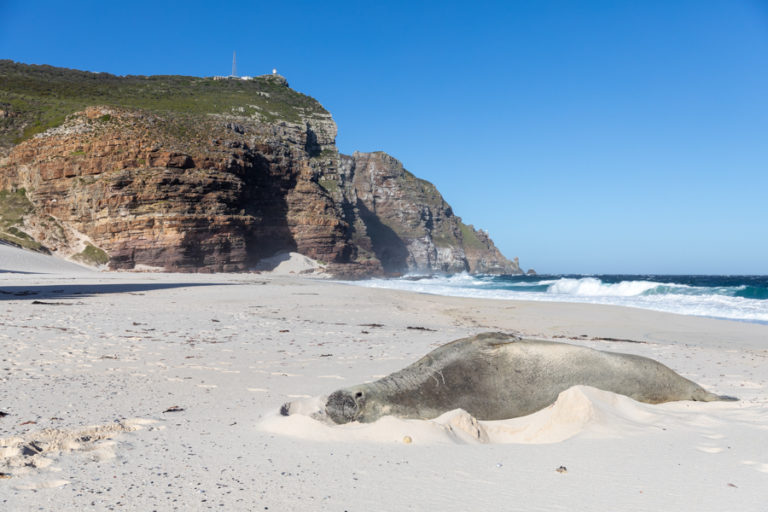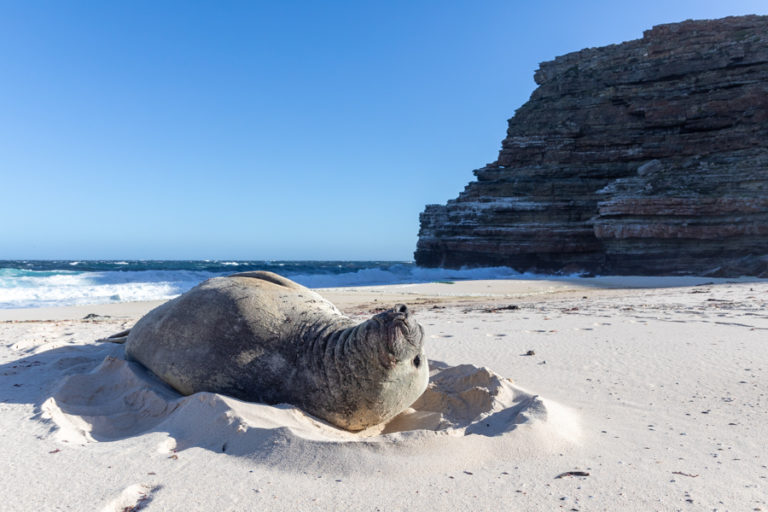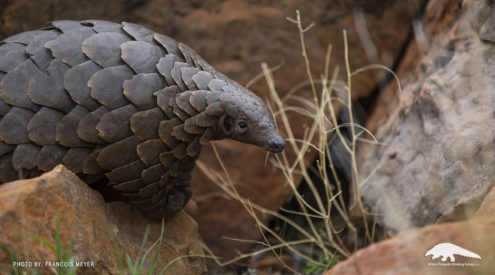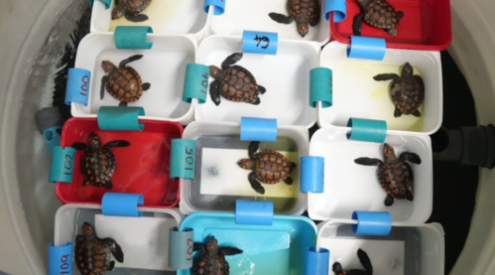A southern elephant seal has just arrived on Dias Beach near Cape Point in Table Mountain Nature Reserve.
 Elephant Seals are a rarity to these shores, a few stragglers find their way to South Africa each year, sometimes joining Cape fur seal colonies. There are roughly around 10 sightings a year of this species on our coastline. The male at Dias Beach seal has likely landed here for his annual moult.
Elephant Seals are a rarity to these shores, a few stragglers find their way to South Africa each year, sometimes joining Cape fur seal colonies. There are roughly around 10 sightings a year of this species on our coastline. The male at Dias Beach seal has likely landed here for his annual moult.
Southern elephant seals swim around the sub-Antarctic islands about 2000 kilometres south and south west of South Africa. They find a beach somewhere between Antarctica and South Africa on which to moult. The South Atlantic waters are home to about 400,000 individuals, including about 113,000 breeding females on the island of South Georgia. Other significant breeding colonies are located on the Falkland Islands and Valdes Peninsula in Argentina.
Males weigh between two and four tons (larger than walruses) and females are between 400 and 900kg.

Moulting
Moulting is a process during which elephant seals shed a layer of their skin. The process takes about one month. This is done as an adaptation to their deep, cold dives. During these dives, the seals limit the blood flow to their skin as it is is directed to the brain and core organs. In order to maintain a healthy pelt, they spend a month on a comparatively warm beach to allow blood to circulate past the skin without excessive loss of body heat. Here they survive on their large amounts of stored body fat.
Elephant seals are particularly vulnerable during this time, and visitors are advised to steer clear of these marine animals as they undergo the process of moulting.
The last elephant seal reported on Cape beaches was Buffel, a regular visitor to our shores. It has yet to be determined if this is the same seal or not.
Images by Anton Crone

















